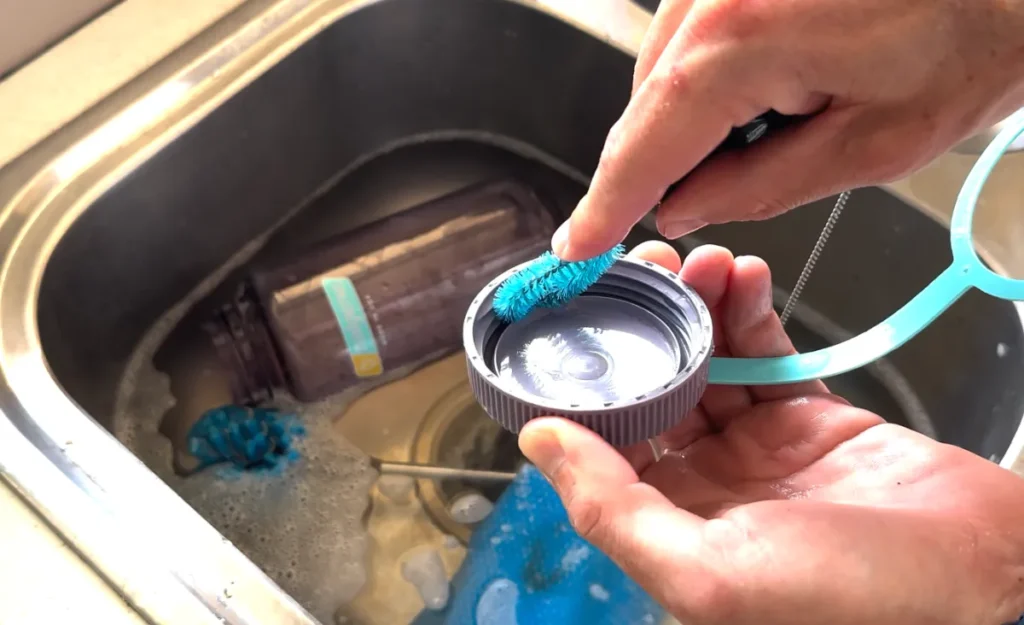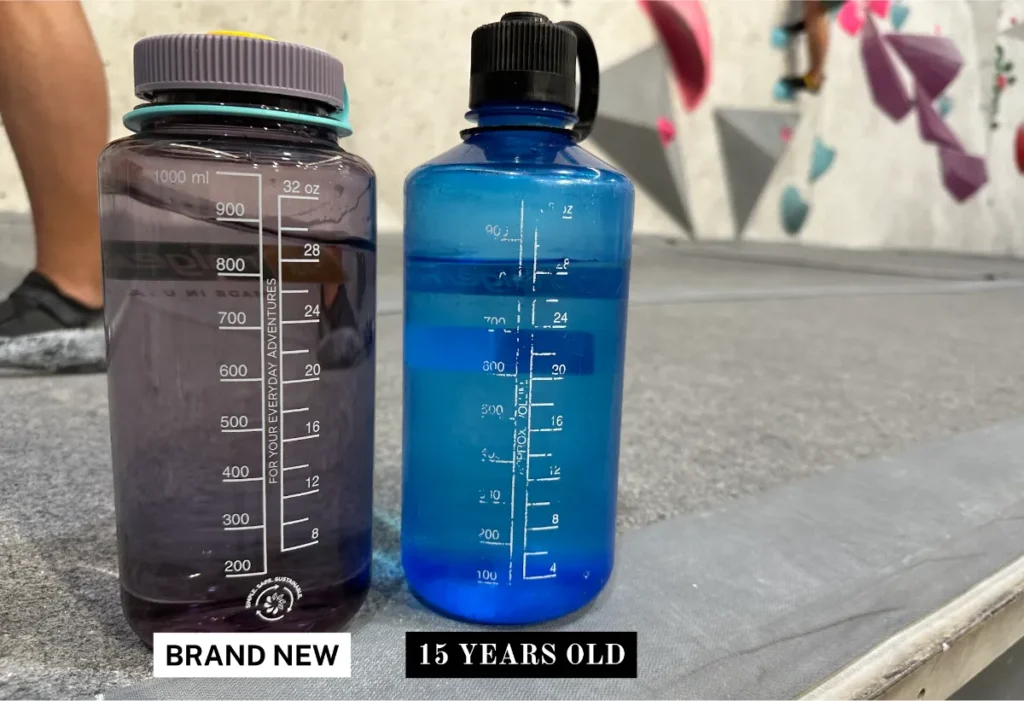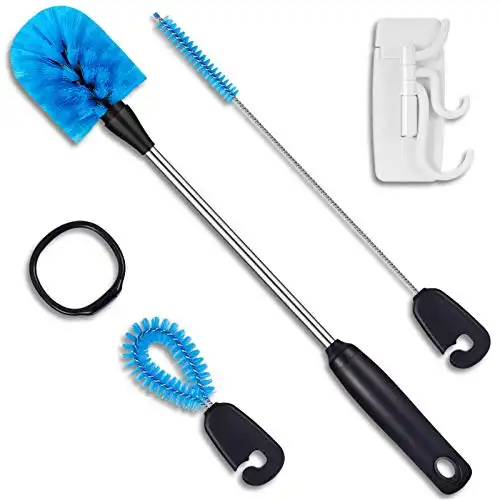I've got a friend at climbing who has a Nalgene bottle that she's had for nearly 15 years and honestly it still looks pretty good for it's age (much like I do).
I also purchased an old Nalgene bottle from 1995 and it's still in pretty great condition too. Nalgene bottles seem to last a really REALLY long time.
But it got me wondering, do Nalgene bottles go bad or wear down over time?
Nalgene bottles don't really go bad or wear down over time. They are backed by a lifetime warranty and the only real degradation that occurs is micro-scratches in the plastic and the measurements and logo wearing off.
However, long term exposure to UV rays as well as regular exposure to high heats can weaken the plastic and cause your Nalgene to wear down over time or become more brittle and break easier.
It's also common for the Nalgene lids to break before the bottles themselves do. Nalgene lid straps commonly break as they are the weakest part of the bottle and also the part that experiences regular bending. But you can make your own lid strap for your Nalgene or you can contact the company for a replacement.
Nalgene does replace broken bottles free of charge and when they say lifetime warranty they mean it. So you can rest assured that even if your Nalgene bottle does wear down the company will replace it for you.
Exposure to bleach or other chemicals or long periods of time without proper cleaning can cause the stainless steel Nalgene to rust in spots.
Microscratches In Old Nalgene Bottles

One of the ways older Nalgene bottles go bad or wear down is through microscratches.
It can occur on both the outside of the bottle but also the inside of the bottle.
Over time through wear and tear the bottle begins to experience micro-scratching. While this isn't a big deal and the bottle will still work fine it can lead to increase chemical leaching into your water.
This is especially concerning with the Nalgene bottles made prior to 2008 which aren't BPA free. It's less of a concern with bottles made after 2008 which are made from Tritan plastic which is BPA and BPS free.
For me I like to avoid any potential chemical leaching at all so if I notice a lot of scratches on my Nalgene bottle I'll retire the bottle. There are a variety of uses for old Nalgene bottles that can give it a second life.
Printed Measurements Wearing Off

Something you'll also notice with old Nalgene bottles is that the liquid measurements printed on the outside of the bottle will wear off over time.
This is completely normal as the outside of the bottle is exposed to a lot of wear and tear and the print, while strong, isn't indestructible.
Nalgene Bottles Going Cloudy

Another issues that you get with old Nalgene bottles is that they can start to build up a residue and get cloudy over time.
You may think that this is your Nalgene bottle breaking down but usually it isn't.
In fact, fixing a cloudy Nalgene bottle is actually a pretty simple process and only requires salt, ice and a bit of elbow grease. It's well worth the offer to get your Nalgene looking brand new again.
The Other Way Nalgene Bottles Go Bad – Mold
The most common way that Nalgene bottles go bad is when they aren't cleaned properly and they stay to grow mold.
If you've ever lost a bottle like I did only to surprisingly come across the “lost” bottle weeks or months later you've likely discovered (like me) that its rim and lid were covered in black mold!
Nalgene bottles are less prone to mold than some other brands of bottle because of the simplicity of their design, but they can still go bad.
If they’re not cleaned properly, bacteria and mold can build up within days.
By cleaning your Nalgene bottle regularly and thoroughly, you can avoid it going so bad that it becomes unusable.
If you're wondering how often you should wash your Nalgene I try to at least rinse my Nalgene after every use and wash every few days. If it's been a while then I'll run my Nalgene through the dishwasher or treat it with vinegar to kill mold.
You’ll be pleased to know that Nalgene bottles don’t go bad as quickly as some other types of bottle.
The reason is that, firstly, Nalgene bottles don’t have lid gaskets, where scum often builds up—and secondly, Nalgene bottles are transparent, meaning they let more light inside (mold loves the dark).
Nalgene bottles can go cloudy over time, but that’s not too much to worry about either. Cloudiness is often just due to hard water deposits or your bottle getting old, and it can be fixed.
That said, the story of my “lost” bottle going bad proves that Nalgene bottles can, and do, go bad under certain conditions. What are those conditions, and how can they be avoided?
How Do Nalgene Bottles Go Bad?

Nalgene bottles hold water, which is totally harmless and doesn’t need cleaning, right? Wrong!
As I learned the hard way, even just the tiniest drops of residue can, if left to fester in a Nalgene bottle, lead to mold building up quickly. You’ll probably first notice this if your bottle starts to smell funky or your drinks start tasting “off”.
What’s more, the risk of bacteria and mold is multiplied if you put drinks like milky tea, coffee, or smoothies in your Nalgene bottle.
And trust me, a moldy bottle is no laughing matter; a friend of mine suffered awful nausea and gastrointestinal symptoms that we suspected were down to his barely-cleaned Nalgene.
Stopping Nalgene Bottles Going Bad
To ward off mold and bacteria, you need to clean your Nalgene bottle with hot soapy water once a day or every other day, as well as doing a deep clean once a month.
If you only clean your Nalgene bottle intermittently, or you do it regularly but only superficially, you’ll be risking the build-up of scum and mold—and all that getting into your body.

During cleaning, make sure you get into all the nooks and crannies of your bottle—particularly the lid, where bits of scum might go unnoticed.
And if your bottle still gets moldy somehow—or is moldy already now—don’t fret! You can make your Nalgene bottle mold-free again using household staples like vinegar, baking soda, bleach, soap, and a bottle brush.
I personally recommend this 3-in-1 bottle brush from Amazon as it has a good brush with a long handle for the inside of your Nalgene bottle and a smaller brush which is perfect for getting into the threads of the lid to stop mold building up in there.
Three tools in one. Includes a long bottle brush, straw brush and detail cleaner (great for cleaning inside lid gaskets). Comes with organizer ring and storage hook,





